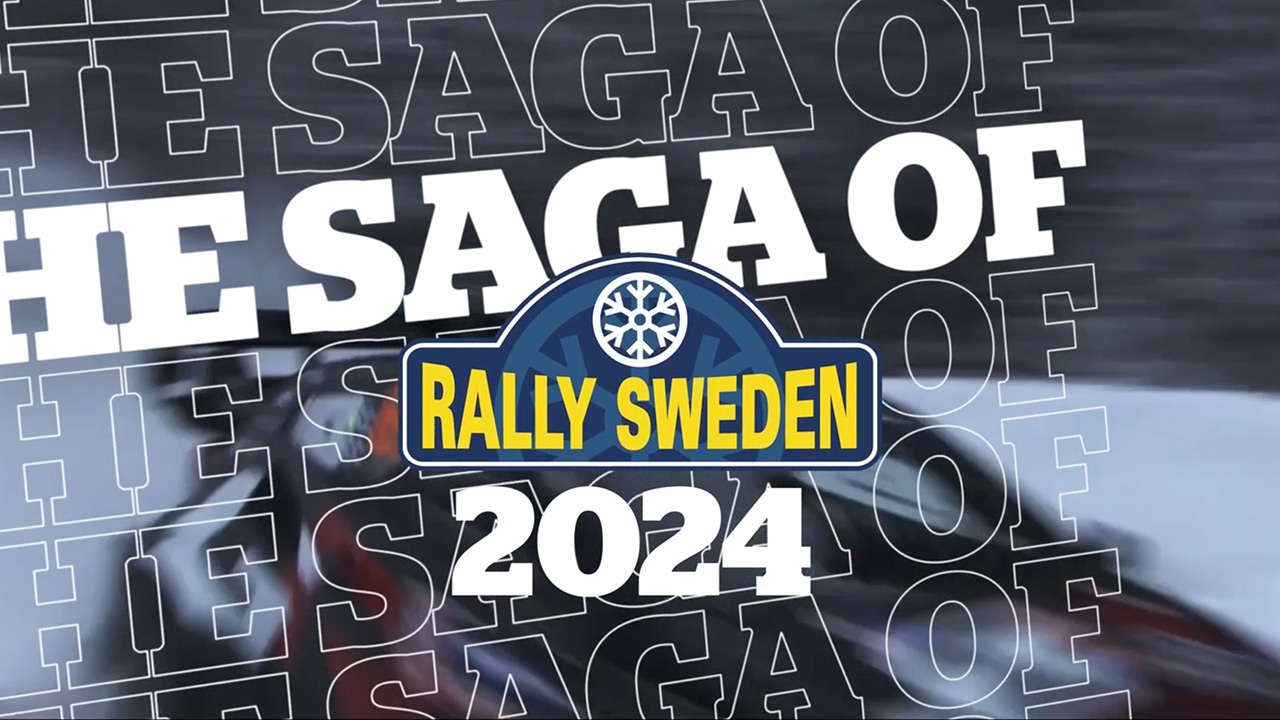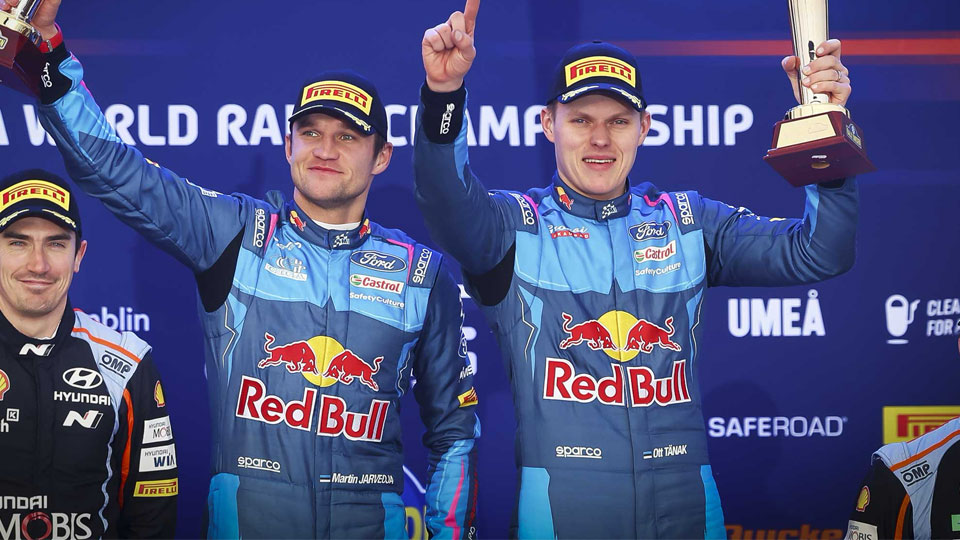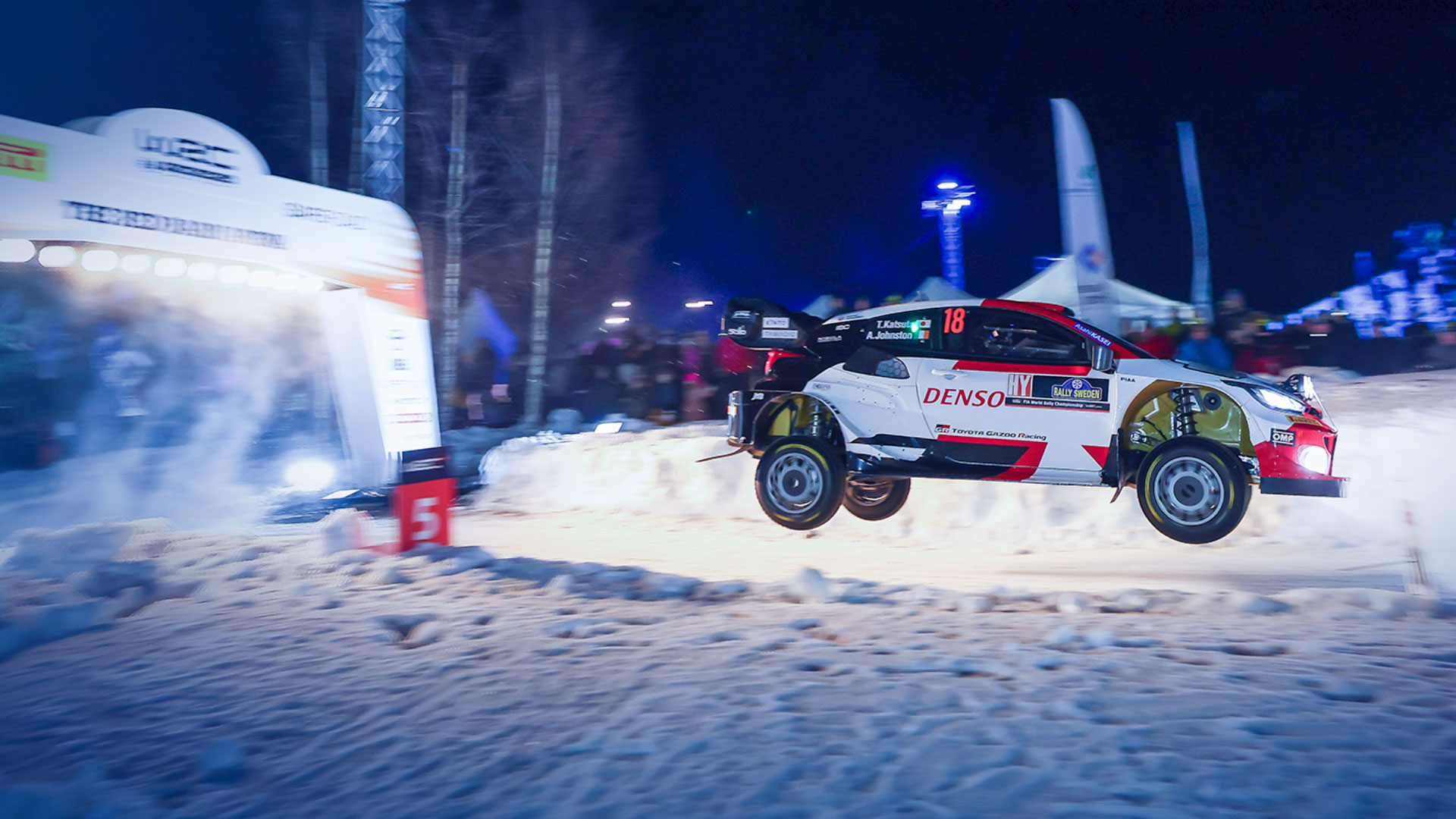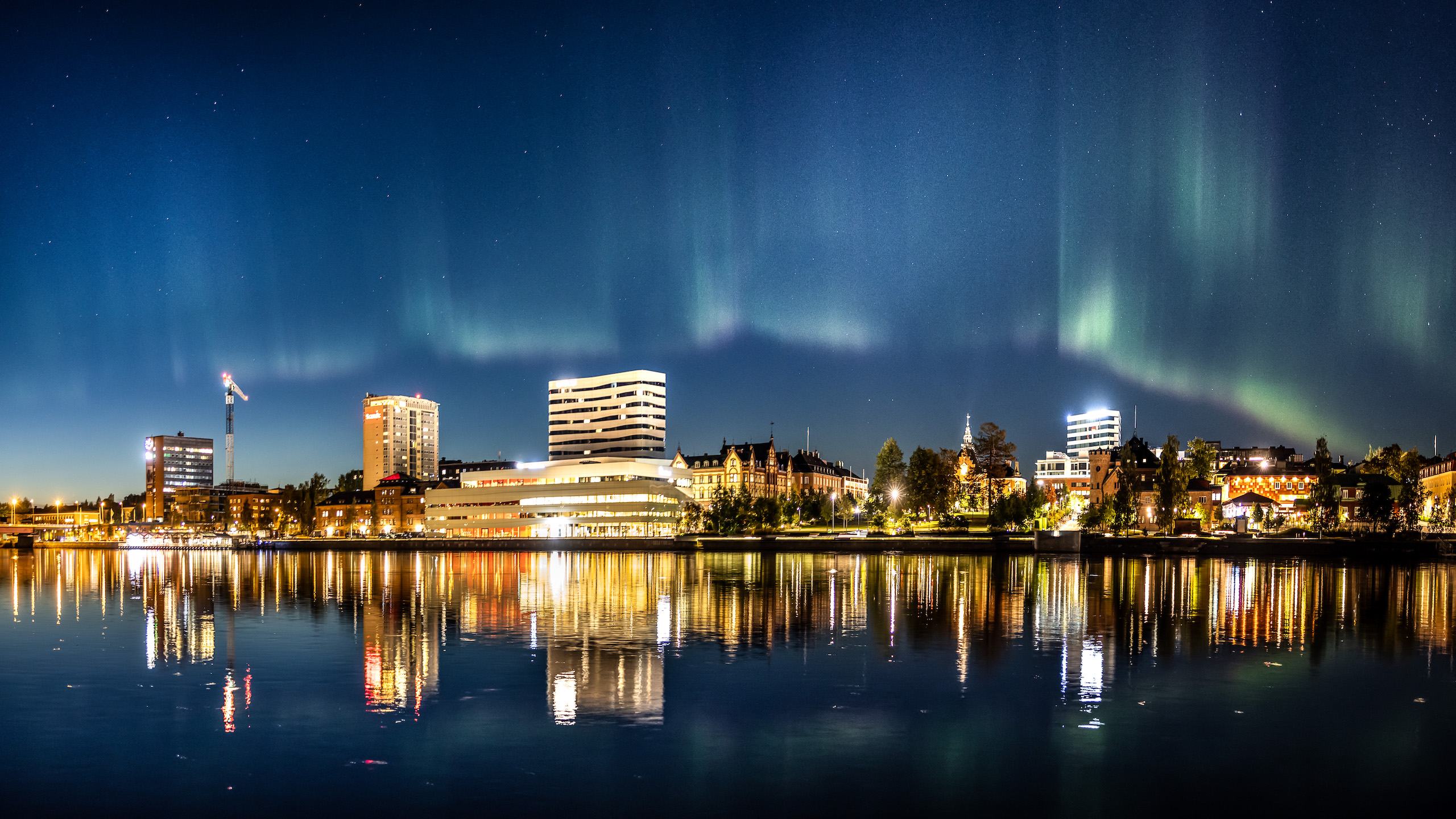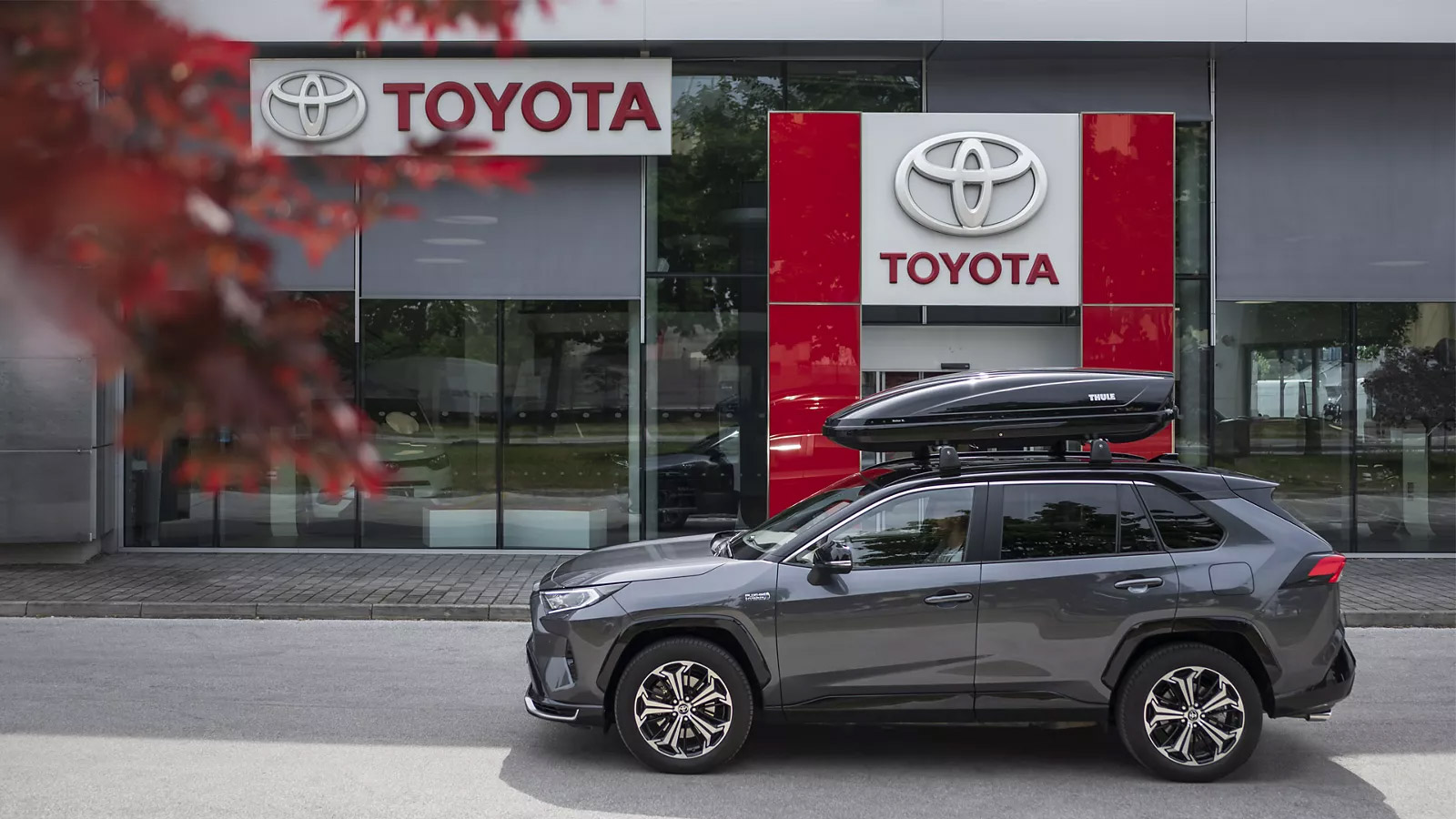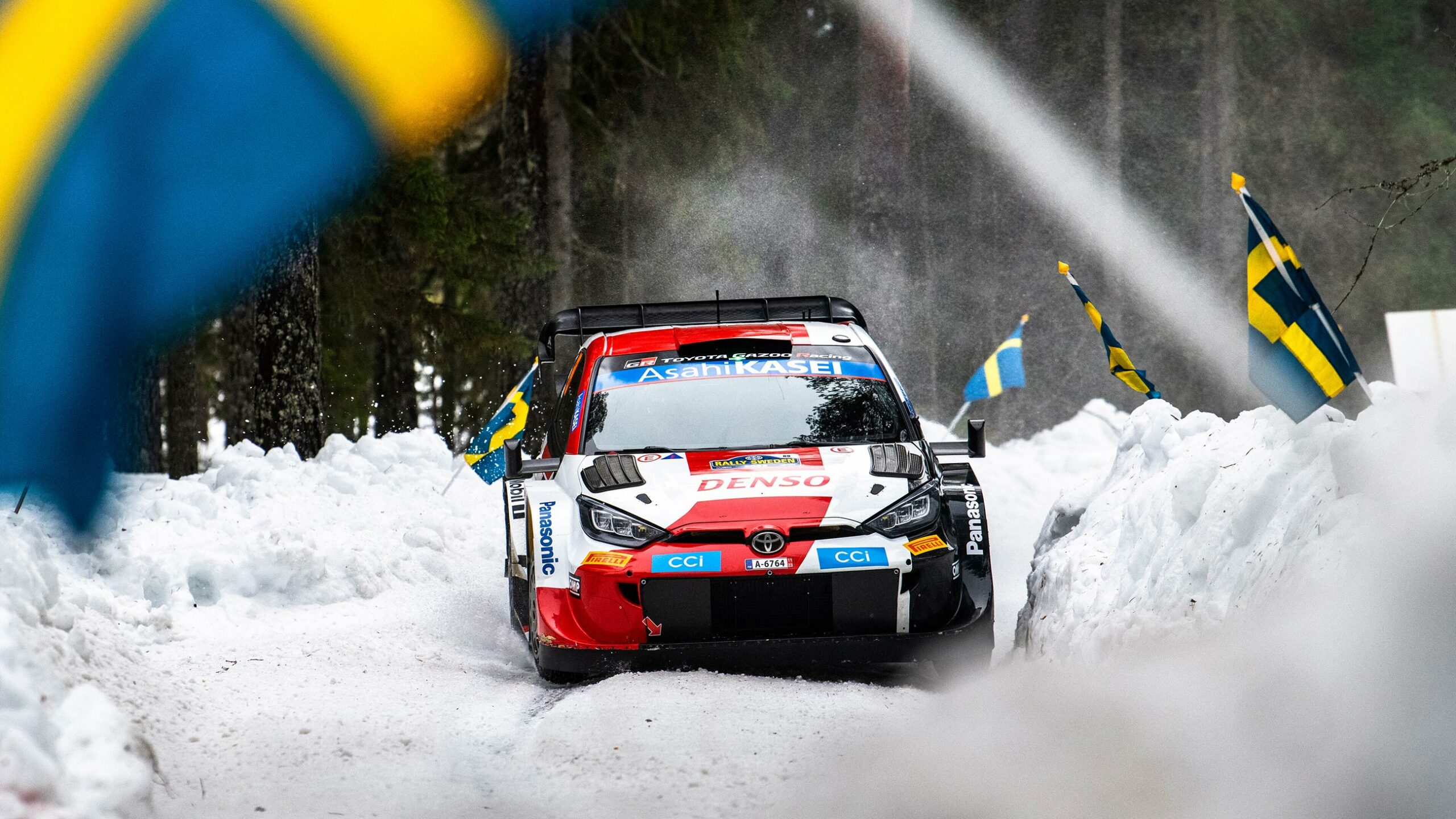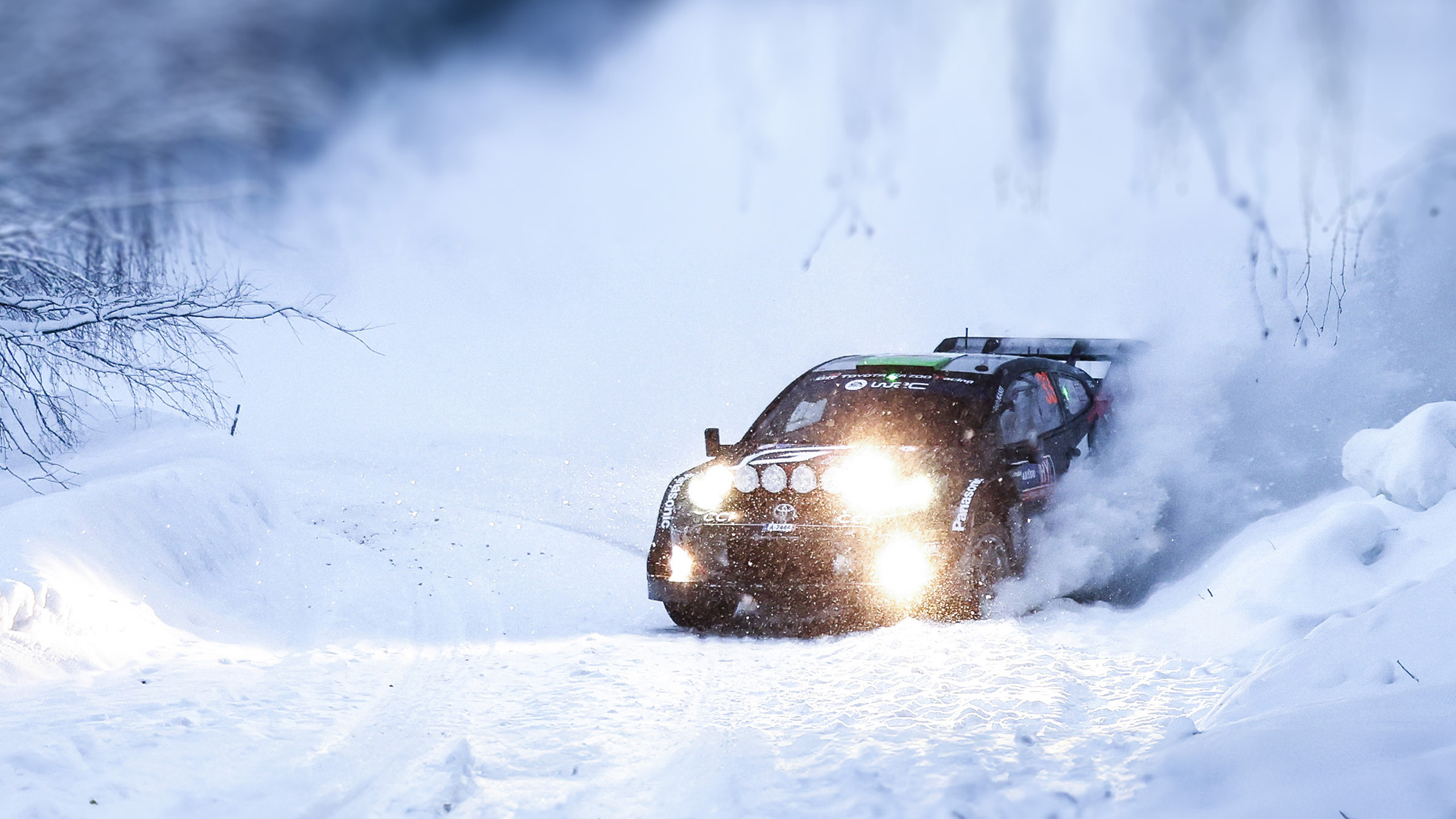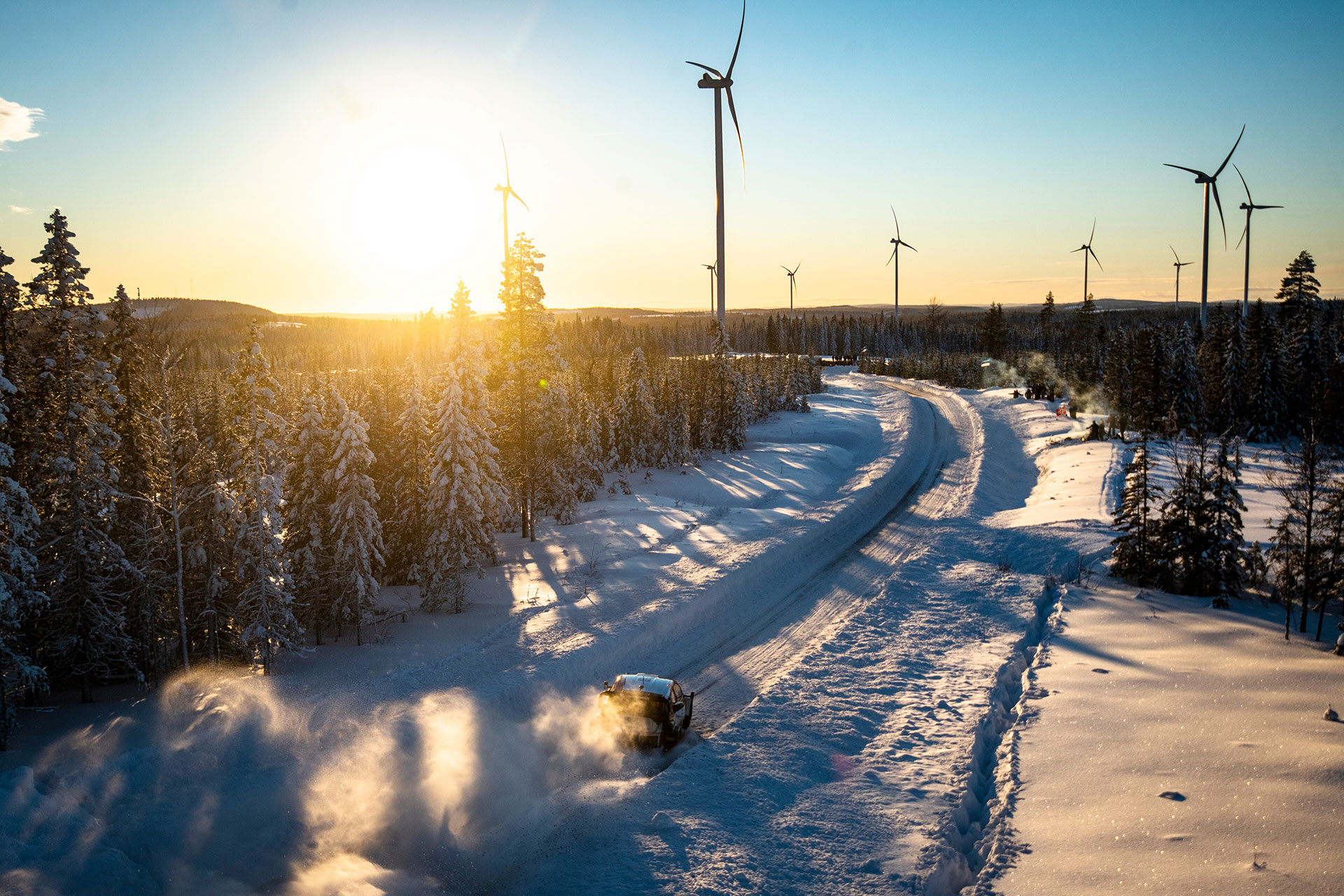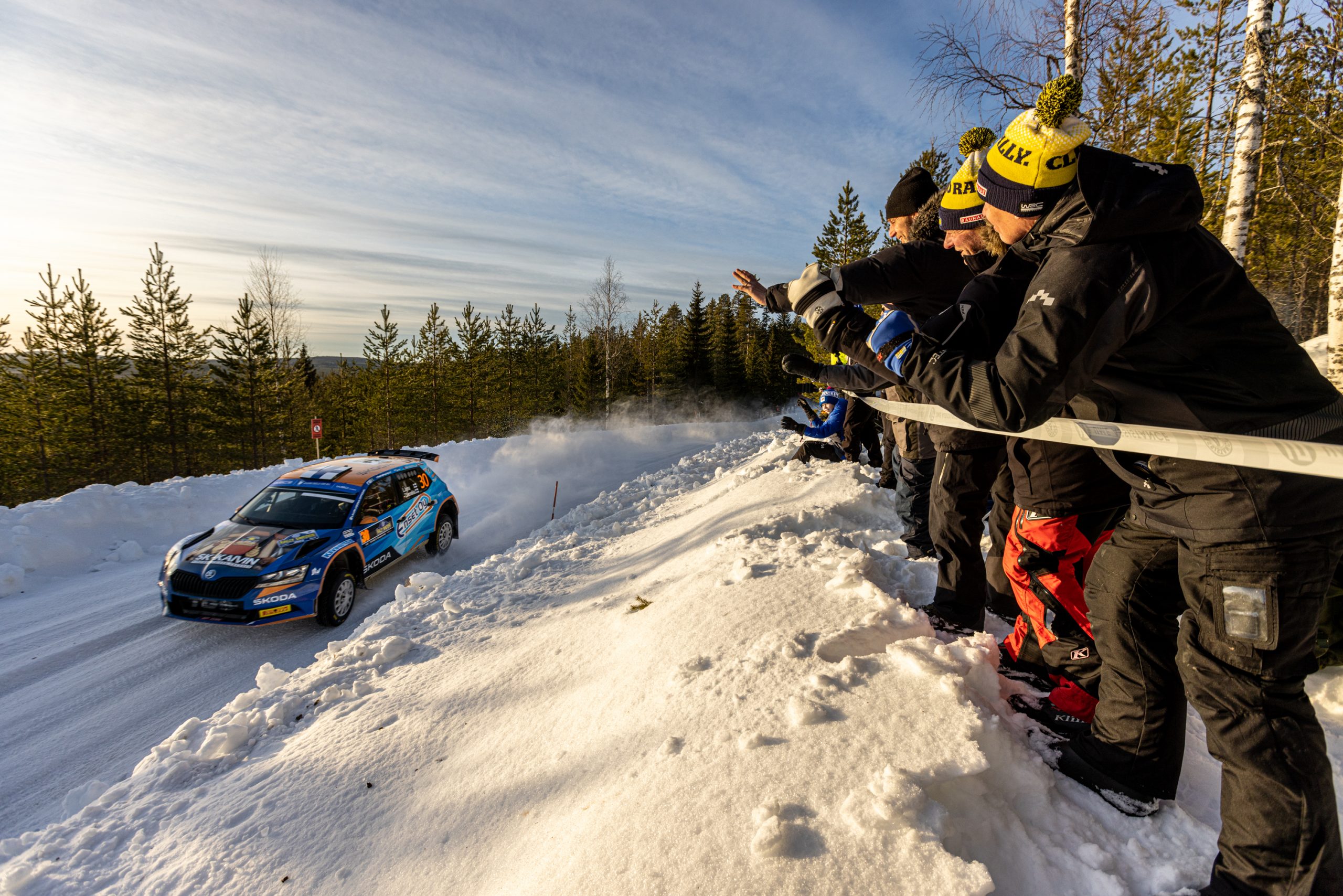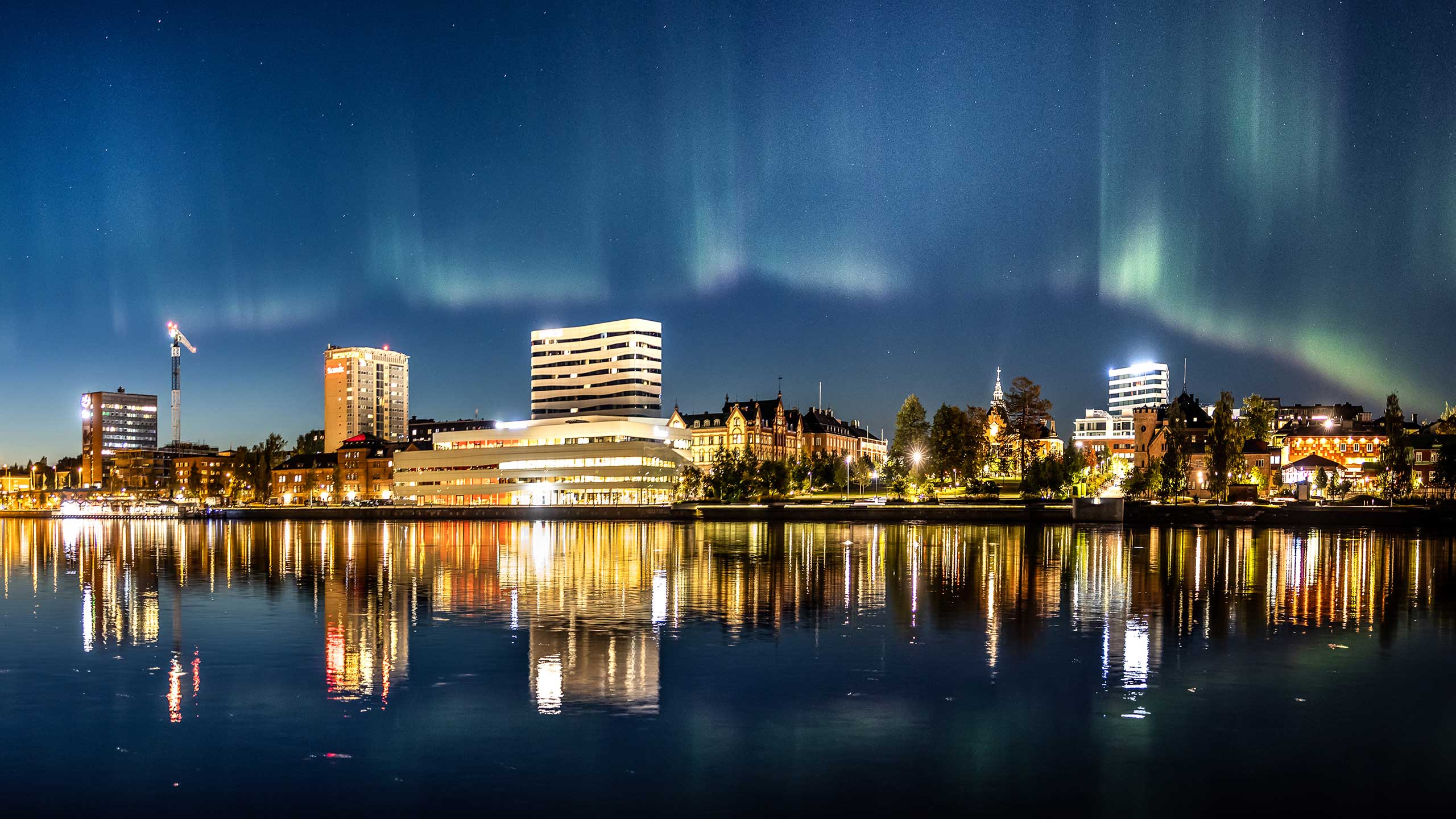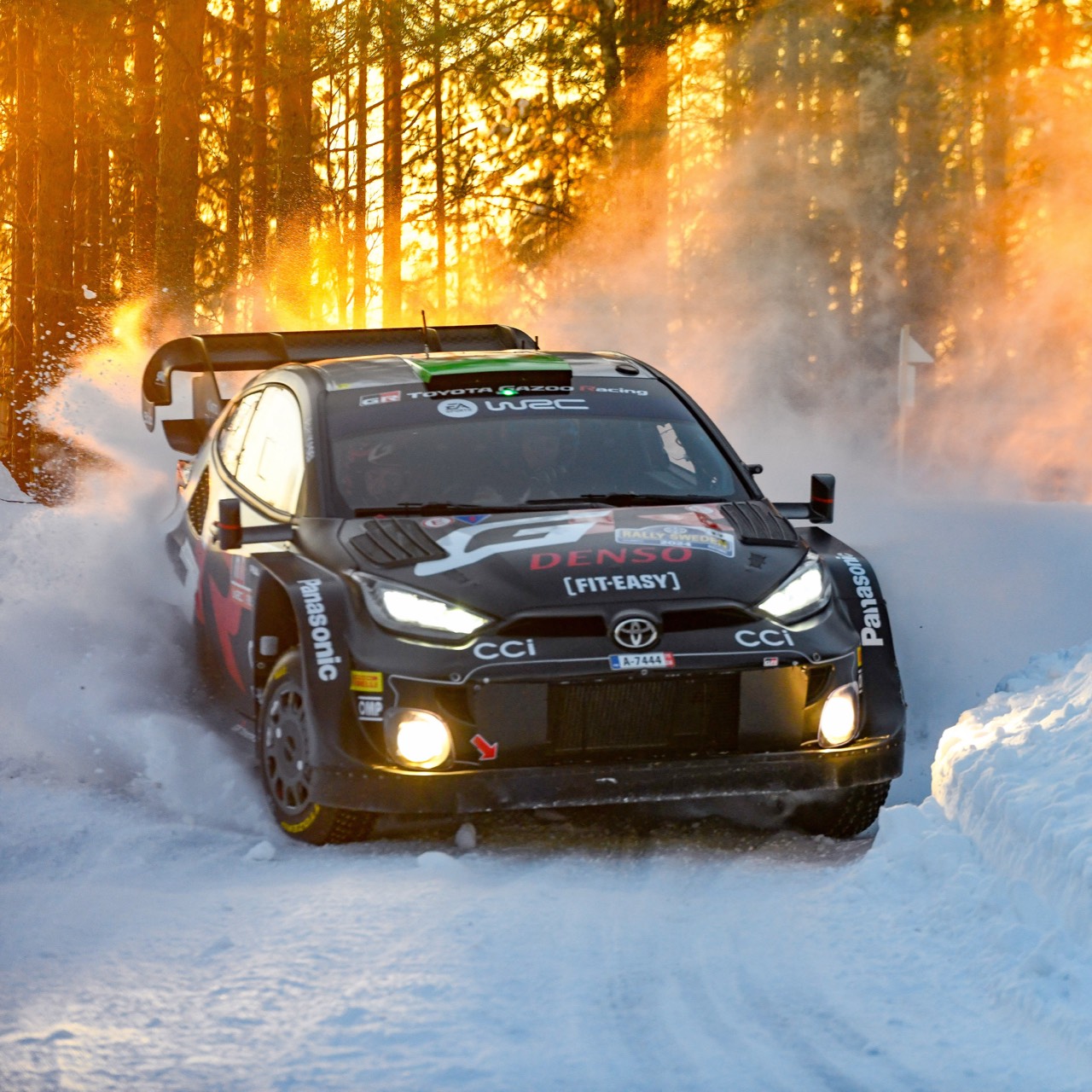Rally Sweden's history begins in 1950 when the first leg of the Midnight Sun Rally took place. Initially, it was a summer competition across the entire country. Starting in Gothenburg, Falsterbo, and Stockholm(!), the rally traversed regular roads, challenging participants to adhere to a fixed schedule. Competitors then gathered in Örebro before continuing through the inland to reach the finish on Saturday in Kiruna, aiming as close as possible to the ideal finish time of 19:59. Between these points, there were hill climb tests in Sälen and some speed stages before the finish in Kiruna, concluding with brake and acceleration tests. Per-Fredrik Cederbaum was the first winner.

Here, we look back and highlight moments in history to remember both the more and less magical moments. Instances and events that have left an imprint on memories and become significant parts of the event's history.
What's your favorite?
1950s

Now with the Finish Line in Rättvik
Starting in Falsterbo, Gothenburg, Stockholm, and Sundsvall, with a detour to Gällivare, the rally featured six speed stages across the country, concluding in Rättvik instead of Kiruna. This change aimed to bring the finish closer to as many participants' homes as possible. Olof "Grus Olle" Persson in his Porsche 356 emerged as the fastest.
Photo: Volkswagen Sverige

Hyland as a Codriver
The later famous radio and TV personality Lennart Hyland provided radio coverage during the 1953 Midnight Sun Rally, accompanying driver Gunnar Olsson as a codriver in an Austin A40. They faced challenging moments, with Lennart reportedly turning pale at times but still managing his job admirably, according to eyewitnesses.
Photo: Gunnar Lantz, The City Museum in Stockholm

Record Leap
Departing from Gothenburg, Malmö, Oslo, Rättvik, Stockholm, Sundsvall, and Umeå, the rally had a collective start for the second stage in Östersund. The route passed the northernmost point near Hoting and finished in Saltsjöbaden, including the customary final special stage. Notably, the polar circle was not crossed, meaning no midnight sun that year. Allan Borgefors set a new stage record and made the longest leap on the Husås–Andviken stage – a whopping 27 meters!
Photo: The Automobile Sport Heritage's archive, Christer Kaiser's collections

Well-Driven Volvo
The magazine Racing featured one of the most peculiar victory headlines, "Well-Driven Volvo Wins Our Worst Roads' Beautiful Rally," to celebrate Gunnar Andersson's triumph in his Volvo PV 444. Simultaneously, Greta Molander secured victory in the ladies' class for the sixth time out of nine attempts, driving her Saab. A new addition this year was the presentation of prizes in the Mixed category, awarded to the best team consisting of a man and a woman.
Photo: Volvo Historical Archive

In 1965, the rally transitioned from summer to winter, renaming itself Svenska Rallyt and later Rally Sweden. For the first two years, Örebro served as the central location, moving to Karlstad and Värmland in 1967. For the same reasons, in 2022, the event moved to Umeå, ensuring ample snow and proper winter conditions.
1960s

Double Winner
Trana won both the last summer rally of the Midnight Sun Rally in 1964 and the first winter rally of Rally Sweden in 1965, driving his Volvo PV 544. Tom, from Kristinehamn, was one of the prominent Swedish drivers of the sixties, including winning the European Rally Championship in 1964.

The Winter Rally
In 1965, the competition transformed from a summer rally on gravel to a winter rally. This shift was crucial for the event's development, making Rally Sweden unique as the only snow and ice rally. This distinctiveness later earned Rally Sweden a permanent place in the WRC calendar.

Björn Waldegård
After a successful debut in 1965, Björn Waldegård's career soared, winning his first of five titles in Rally Sweden.

When the World Rally Championship (WRC) began in 1973, only the constructor's title was at stake in the thirteen events. It wasn't until 1979 that an official drivers' world championship was established. Rally Sweden is one of the five rallies, along with Finland, Italy, Monte Carlo, and Wales, that has been part of the WRC since its inception in 1973.
1970s

The First Rally Sweden WRC Winner
In 1973, the World Rally Championship for Constructors was established, significantly boosting international interest in both WRC and Rally Sweden. The first winner in Sweden was Stig Blomqvist. Or rather, his Saab emerged victorious in the leg. Alpine-Renault, however, claimed the inaugural Constructors' Championship in 1973.
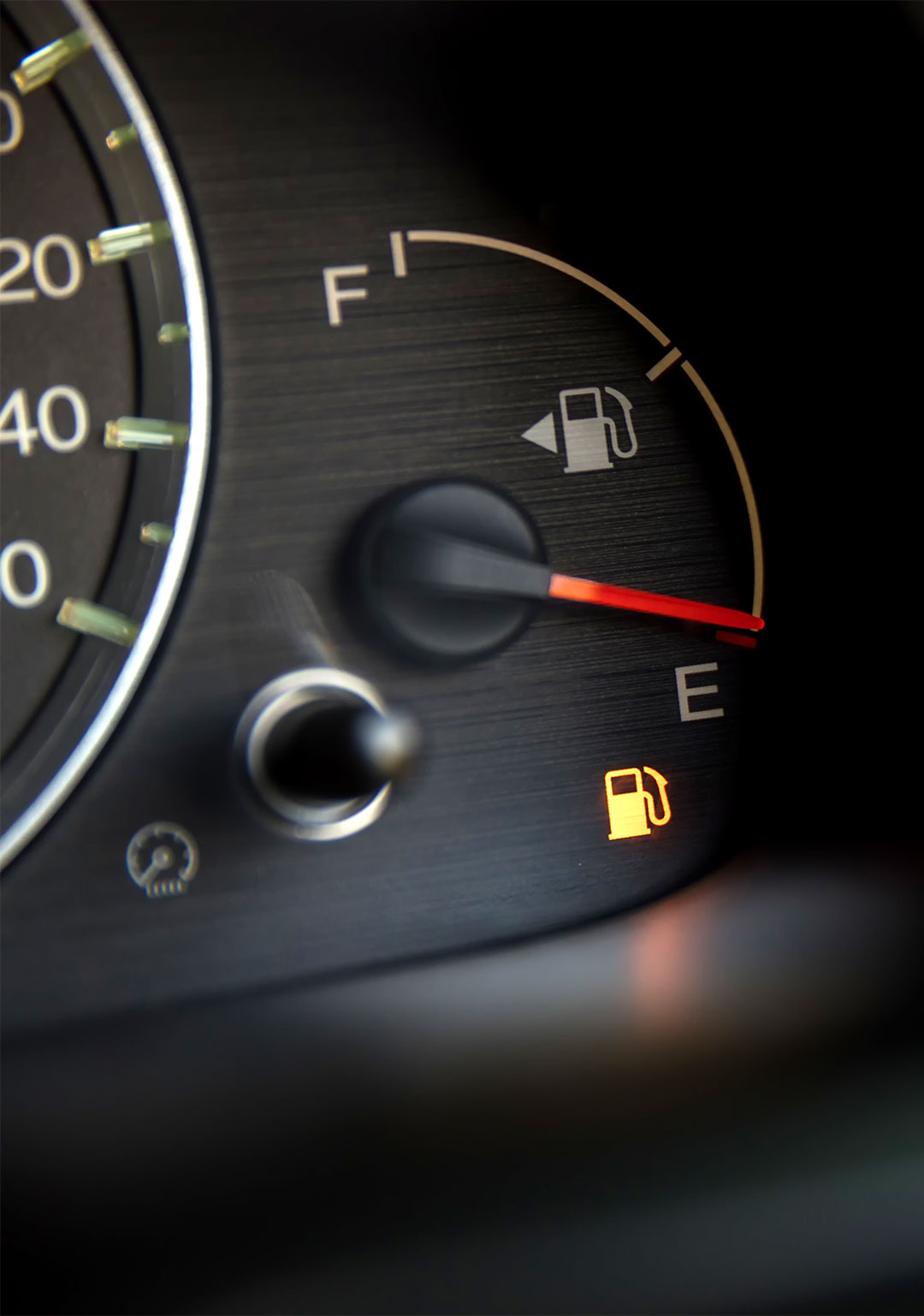
Canceled!
Since its inception in 1950, the rally has been canceled only four times. The first time was in 1974 due to the oil crisis. Although it came close a few times, weather has only halted the rally once, in 1990. In 2009, the event temporarily lost its WRC status in favour of Norway. The 2021 edition was canceled due to Covid-19.
Saab vs. Saab
Per Eklund and Stig Blomqvist both drove for Saab and were equally eager for victory. Before the final stage, both were fired by the team manager for pressuring each other for the win. Per won, and Stig finished second, making everything harmonious in the team afterward!
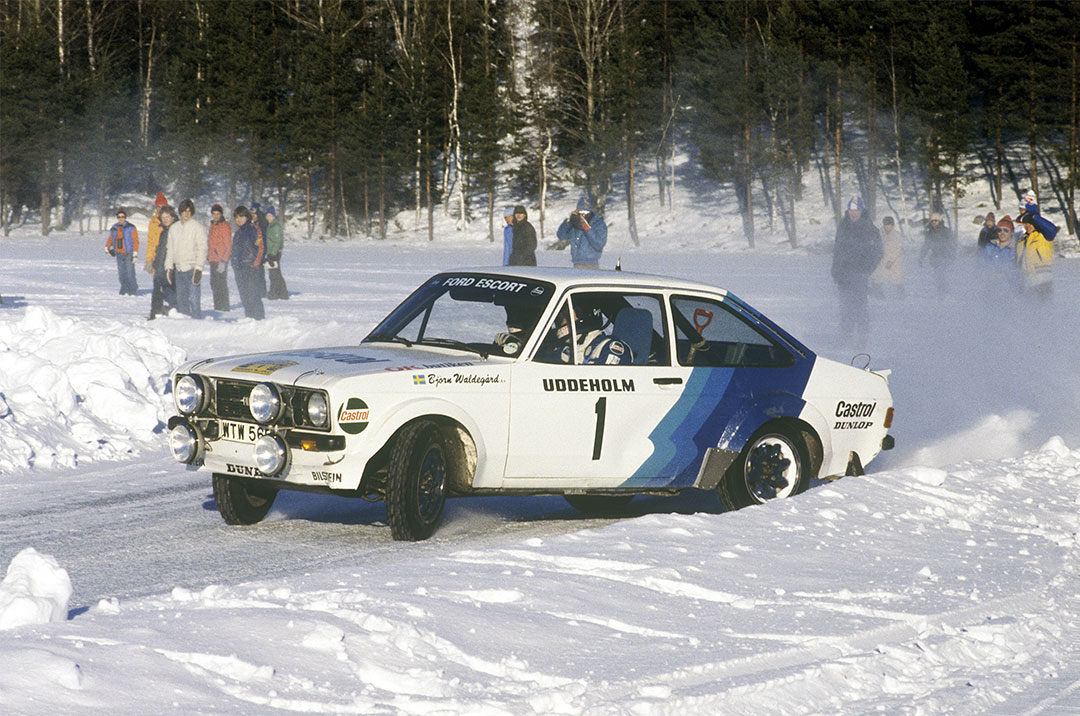
First World Champion
The years 1977 and 1978 were referred to as the FIA Cup for Drivers before 1979 officially became a World Championship, with Björn Waldegård as the inaugural world champion.

The era of Group B – the crazy time of superb cars. Four-wheel drive and turbocharged engines revolutionized the sport. Audi led the way with its Sport Quattro, soon joined by the Ford RS200 and Peugeot 205 T16 – all monstrous four-wheel-drive cars with massive horsepower, classed in through 200 street-legal examples. It's an era that many look back on today with a big smile and a shaking head.
1980s
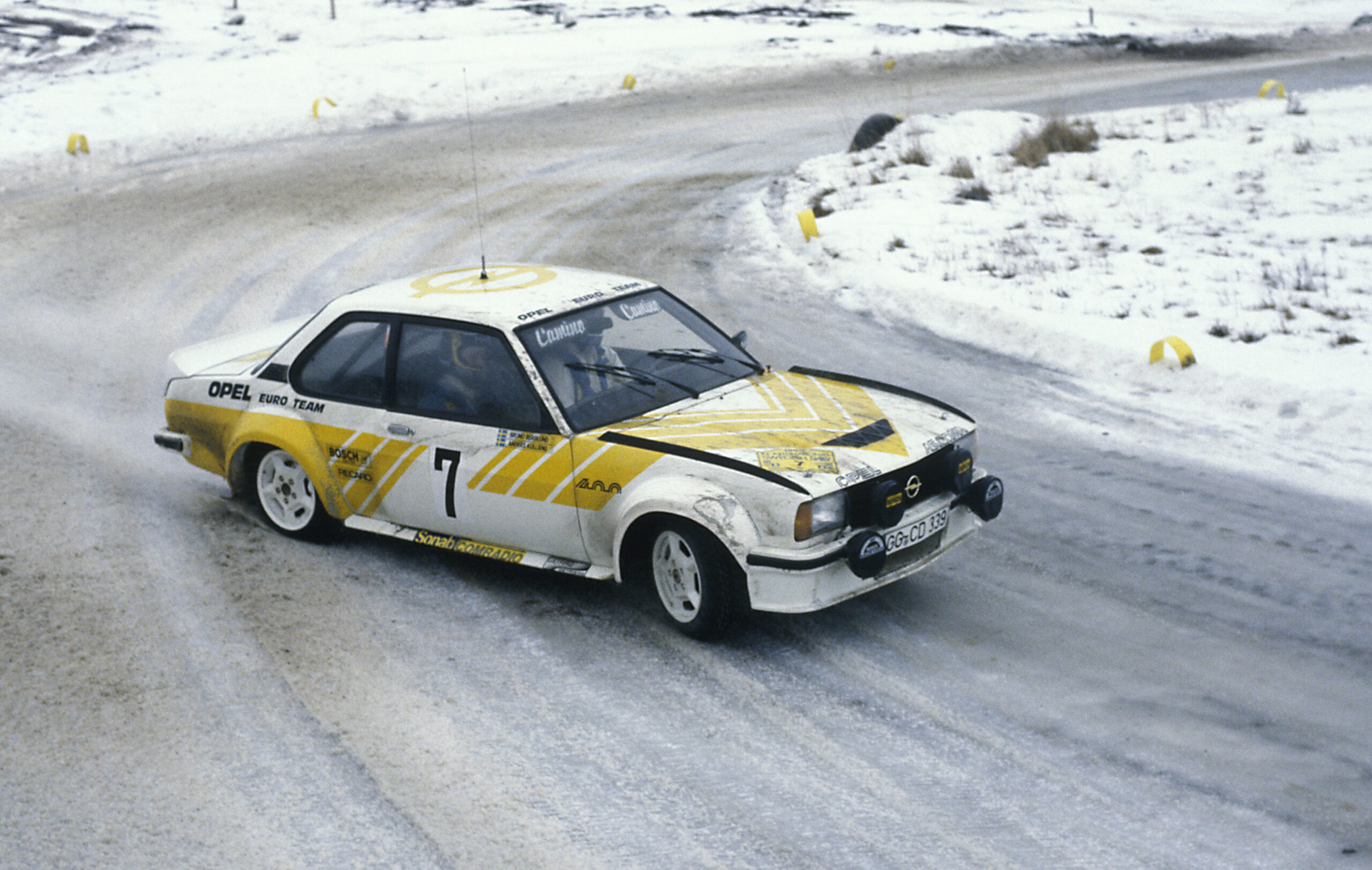
All-Swedish Podium
In 1980, Anders Kulläng, alongside Bruno Berglund in their Opel Ascona 400, secured victory. The podium was entirely Swedish, with Stig Blomqvist finishing second and Björn Waldegård third.

Four-Wheel Drive
Hannu Mikkola triumphed in the debut of the superb Audi Quattro. Simultaneously, he became the first non-Swedish driver to win Rally Sweden, generating increased interest in the winter rally on a global scale.
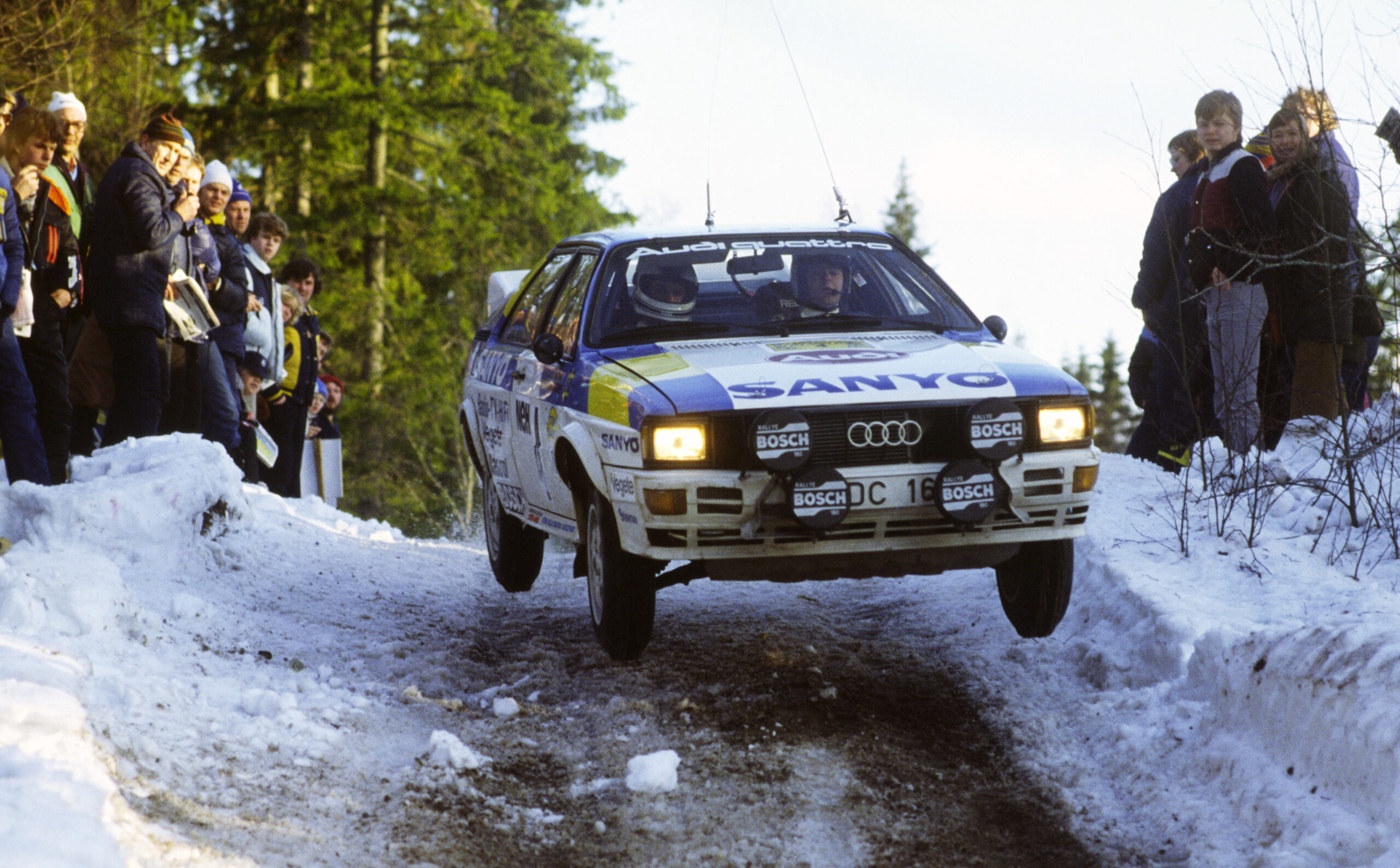
The Audi Knockout
The competition was fierce among four drivers, three in Audi Quattros – Hannu Mikkola, Michèle Mouton, and Stig Blomqvist – and Ari Vatanen in a Ford. On one of the last stages, the rally's longest at 47 km, Häljebyn–Stömne, Hannu went off, and as he was backing up, Michèle collided with him, sending him further into the ditch and the forest. Michèle finished fifth, and Hannu dropped to sixteenth place. Stig, initially the third driver in the team and not planning to win, passed the other two Audi cars in the darkness as they stood in the ditch, securing victory ahead of Ari Vatanen and Walter Röhl in third.
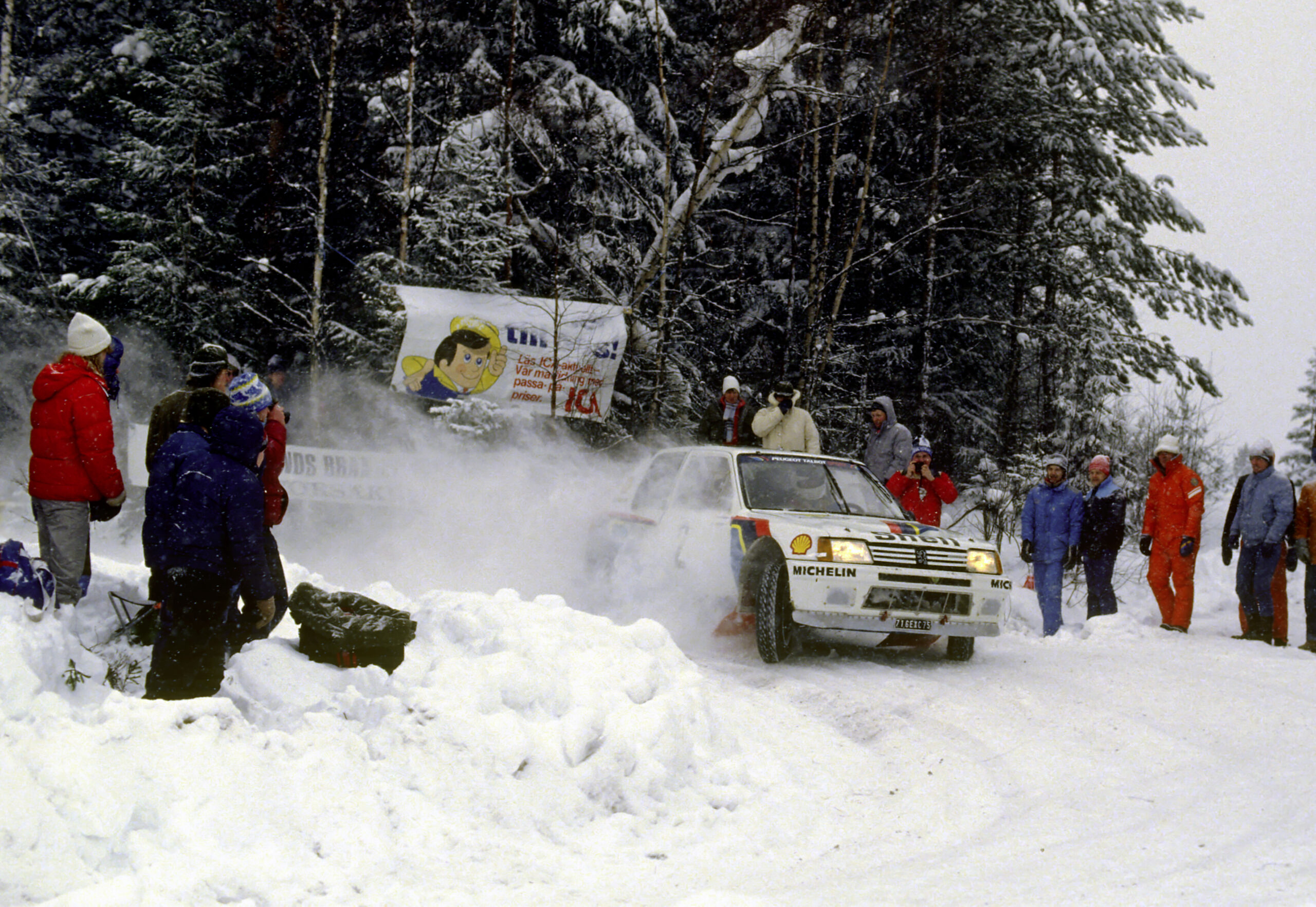
New Champion
Ari Vatanen won with his Peugeot 205 Turbo 16, marking the beginning of the year when Peugeot took over the super car throne from the Audi Quattro.
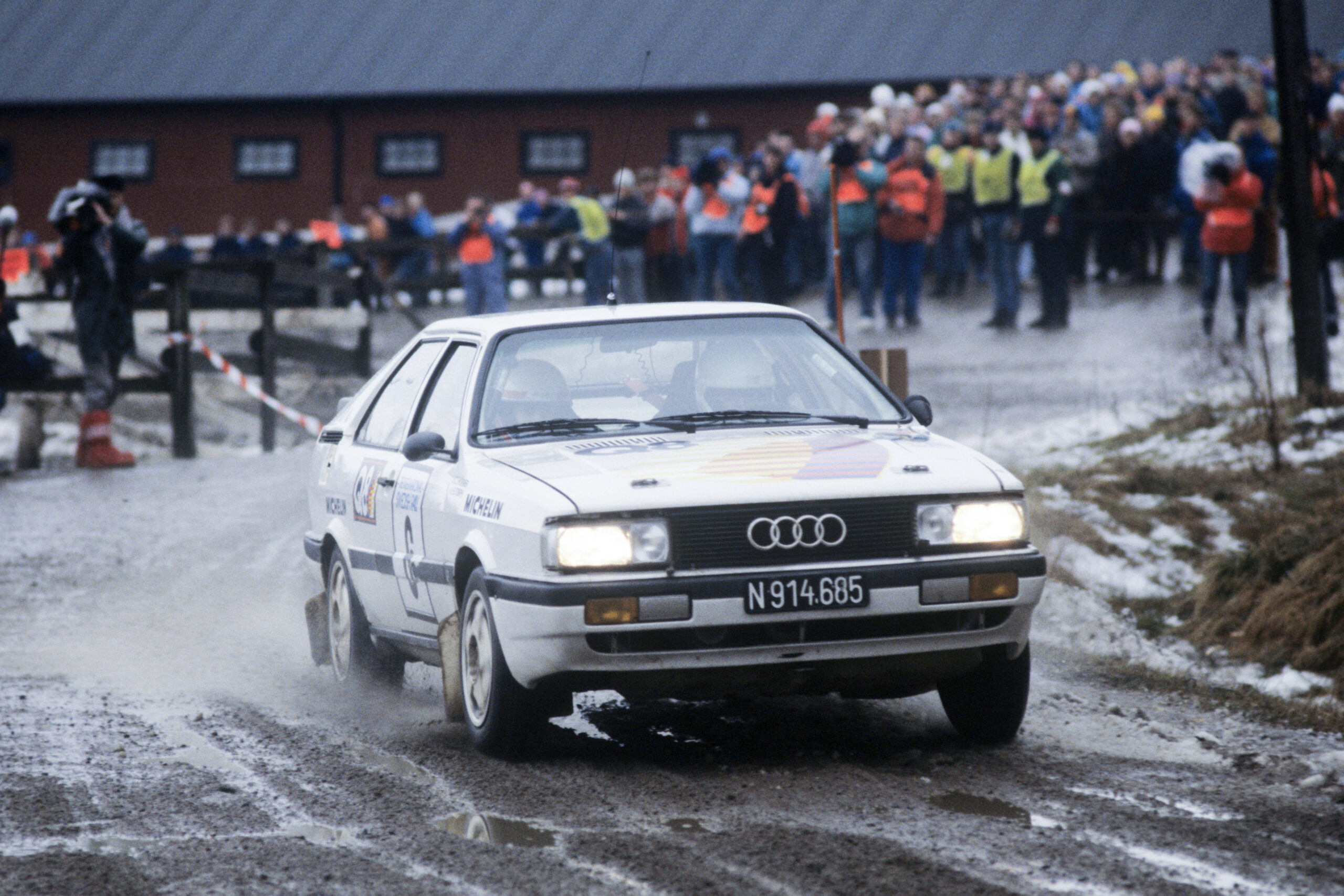
The Climb
Instead of giving up when faced with time penalties during the 1988 races, Lars-Erik Thorp initiated an almost improbable climb from 13th to 3rd place. He drove a privately owned Audi Quattro with Tina Thörner as his co-driver. Only the victorious Markku Alén and the runner-up Stig Blomqvist finished ahead of him.

The 90s are characterized by the "post" era of superb cars. Four-wheel drive becomes a necessity, and Mitsubishi and Toyota take over the lead. Tight competitions, team orders, and excitement prevail as the sport reaches a broader audience. We are still awaiting the next home victory after Kenneth Eriksson in 1997.
1990s

No Competition is a Competition
A canceled competition is also a competition. In 1990, the races were canceled due to weather conditions. Instead, a TV stage was conducted – it became known as the Swedish TV Rally.

Team Orders
In 1995, Tommi Mäkinen deliberately stopped 500 meters before the finish on the last stage because Mitsubishi's team order dictated that the lead driver, Kenneth Eriksson, should win. Tommi got his revenge when he won Rally Sweden the following year – and two more times after that.
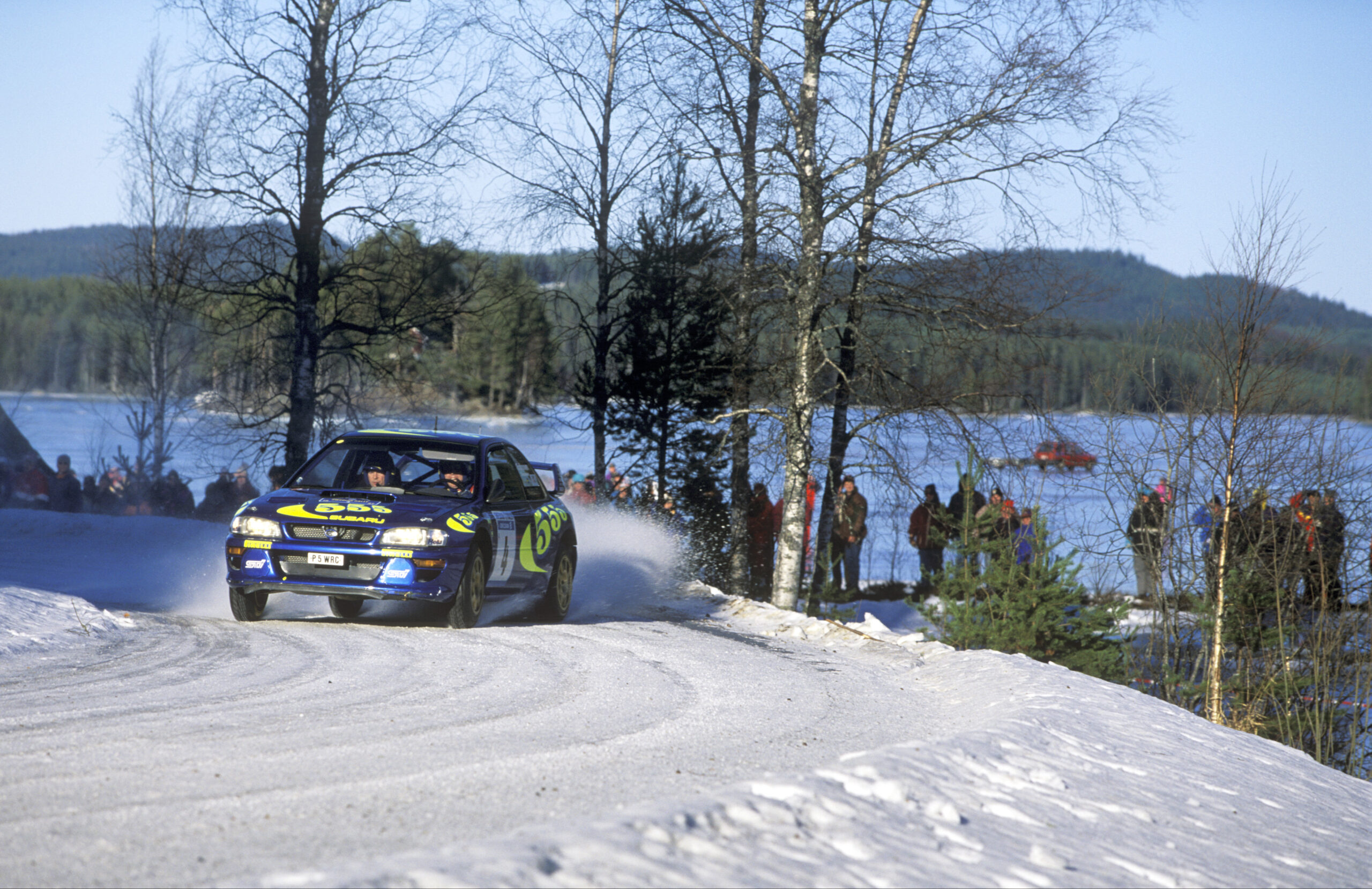
”Trash Can”
The latest home victory in Rally Sweden was in 1997 when Kenneth Eriksson secured his third win. This was achieved through remarkably fast driving on the 21st stage, "Soptönna," in his Subaru.
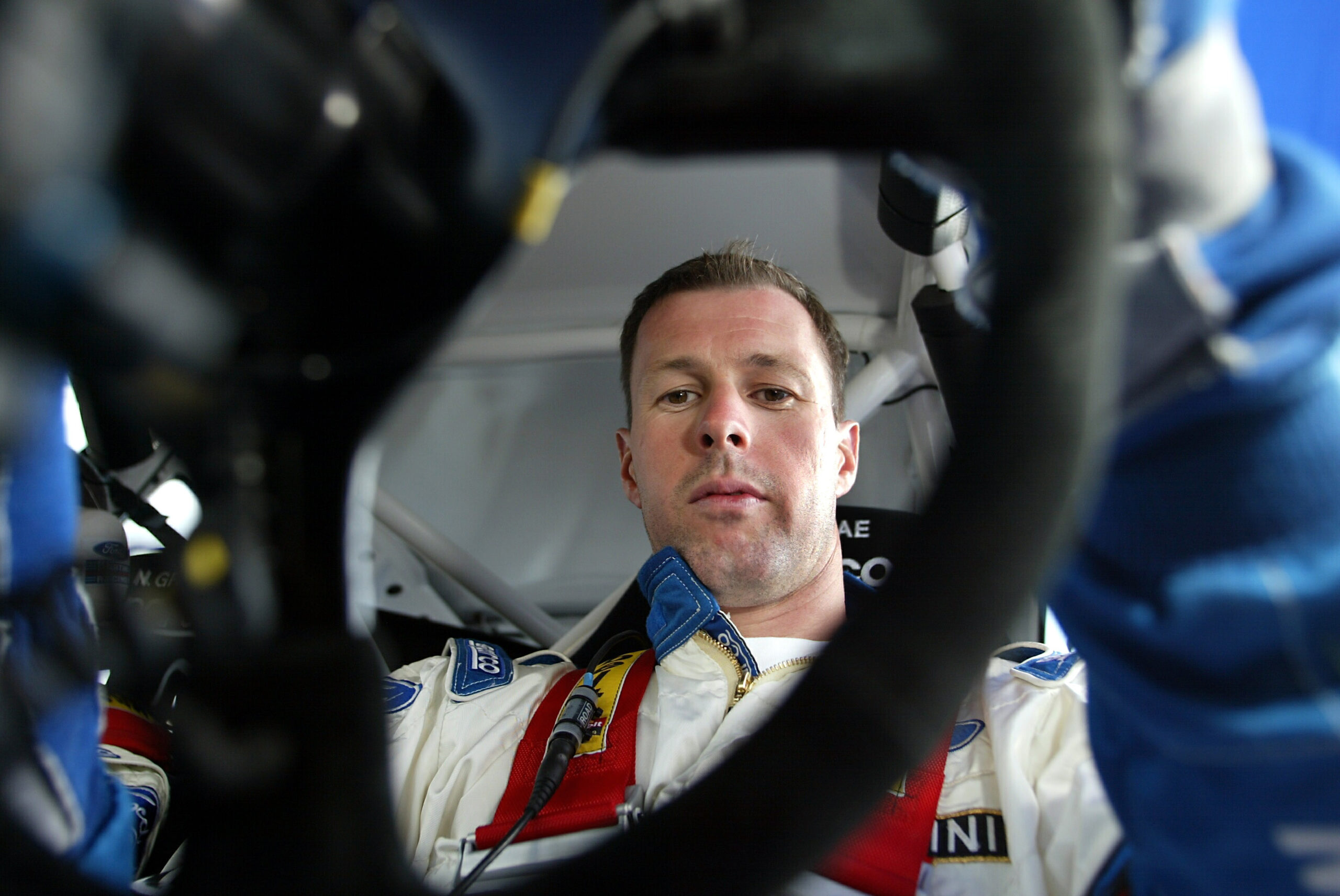
Colin’s Airborne Adventure
Colin McRae's legendary jump in 1997. Legend has it that it was a massive leap with touches on both sides of the ditch before he heroically continued. The Vargåsen stage's peak thus became Colin's Crest. After his tragic passing in 2007, the Colin's Crest Award was introduced, rewarding the person with the longest jump each year. Eyvind Brynildsen holds the record with a 45-meter leap in 2016. Today, Colin's Crest is one of rally's most famous spectator spots, attracting tens of thousands of eager onlookers a Saturday in February – despite its inaccessible location.

Navigation Mistake
Thomas Rådström led by over 30 seconds at most. However, everything went wrong. An overheated engine on the long Jutbo stage and then fantastic TV footage from the car as he missed the pace notes and chose the wrong path. He ended up in a snowdrift, the hood flew open, and the end seemed near…

The French era begins in WRC's kingdom. This trend is reflected in Rally Sweden, with Peugeot as the dominant brand and Sébastien Loeb as the first non-Nordic winner. Otherwise, Finnish drivers thrive in the winter landscape. Naturally, the closest thing to a home victory occurs with Petter Solberg winning both Rally Sweden and the WRC title in 2005.
2000s
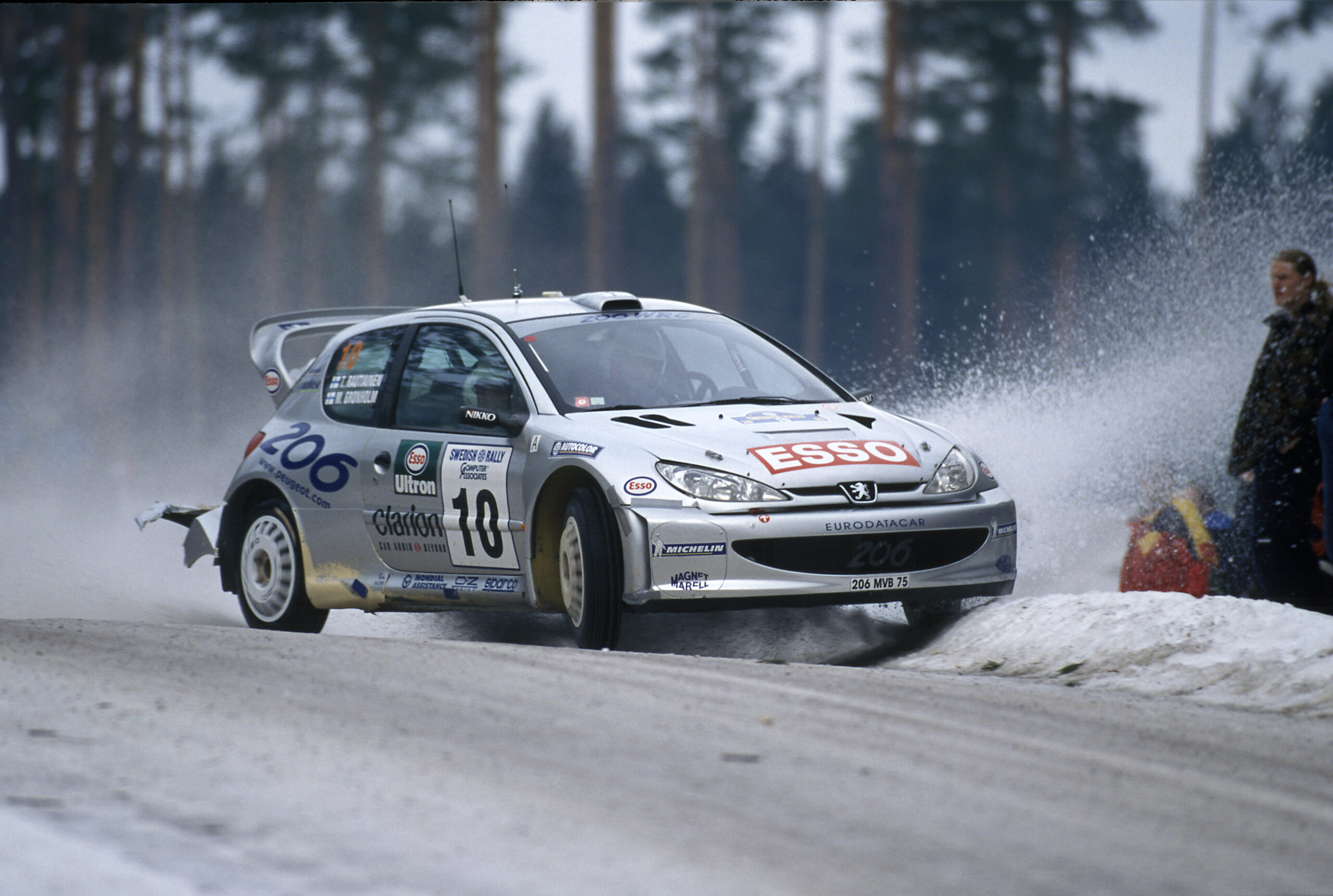
Peugeot Back on Top
In 2000, Marcus Grönholm won the first of his five victories in Rally Sweden driving a Peugeot 206 WRC. That same year, he also became world champion for the first time. Peugeot, after the super car years of the eighties, once again emerged as the leading brand for several years.
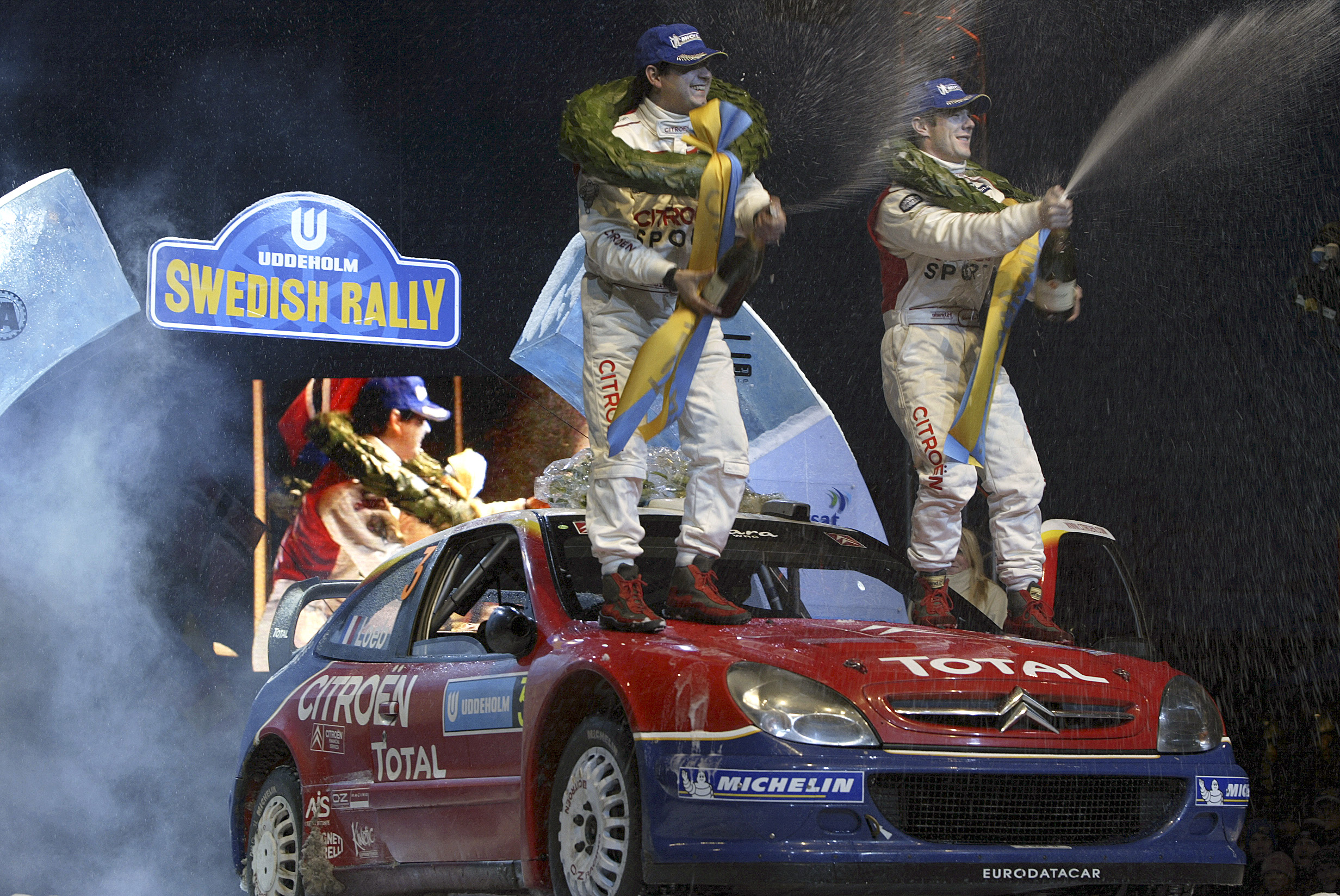
Sébastien the 1th
Sébastien Loeb made history as the first non-Nordic driver to win Rally Sweden in 2004. It took nine years before the next non-Nordic, Sébastien Ogier, secured victory in 2013.
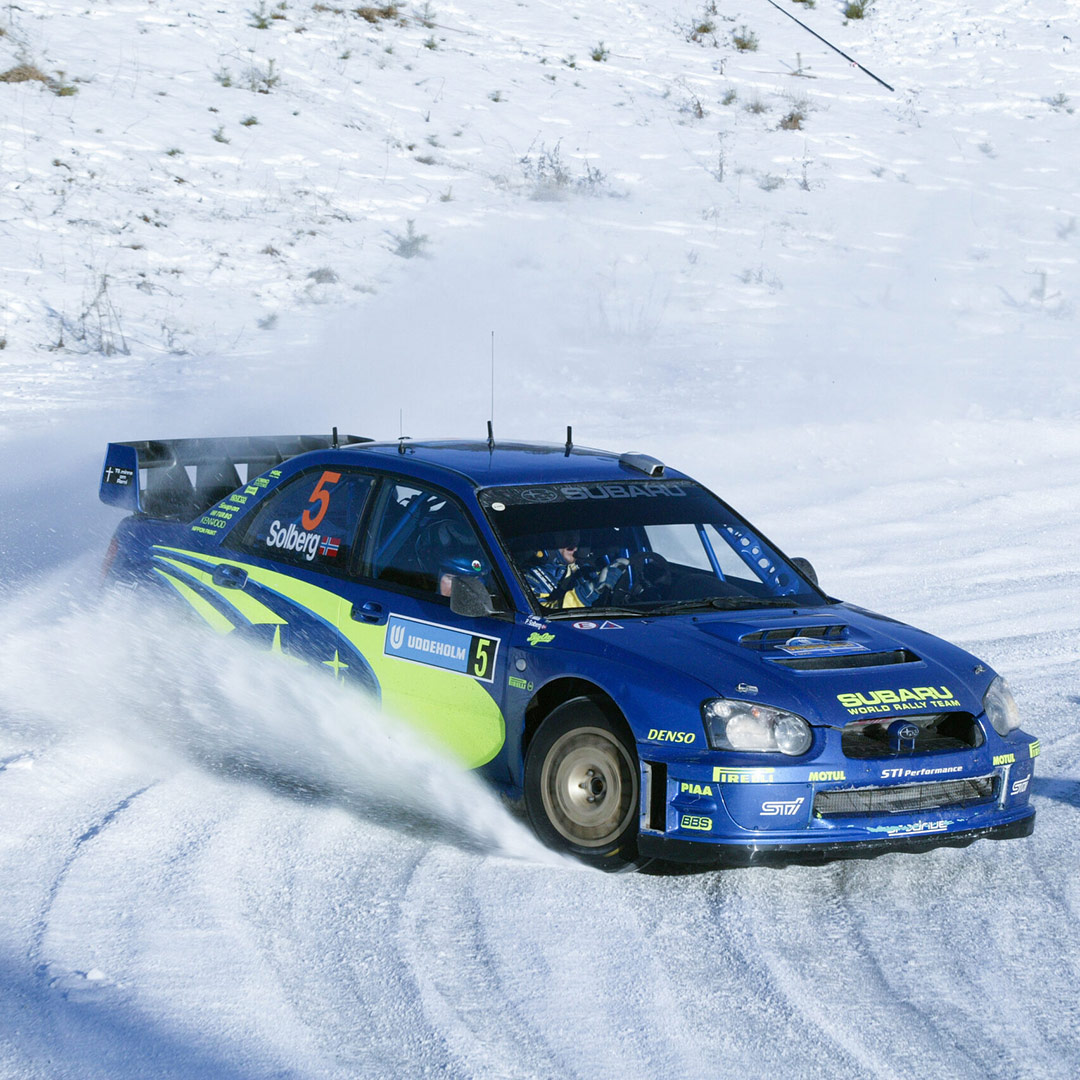
Petter Solberg
A highlight for rally enthusiasts in both Norway and Sweden was when Petter Solberg finally won on "home turf" driving his Subaru.
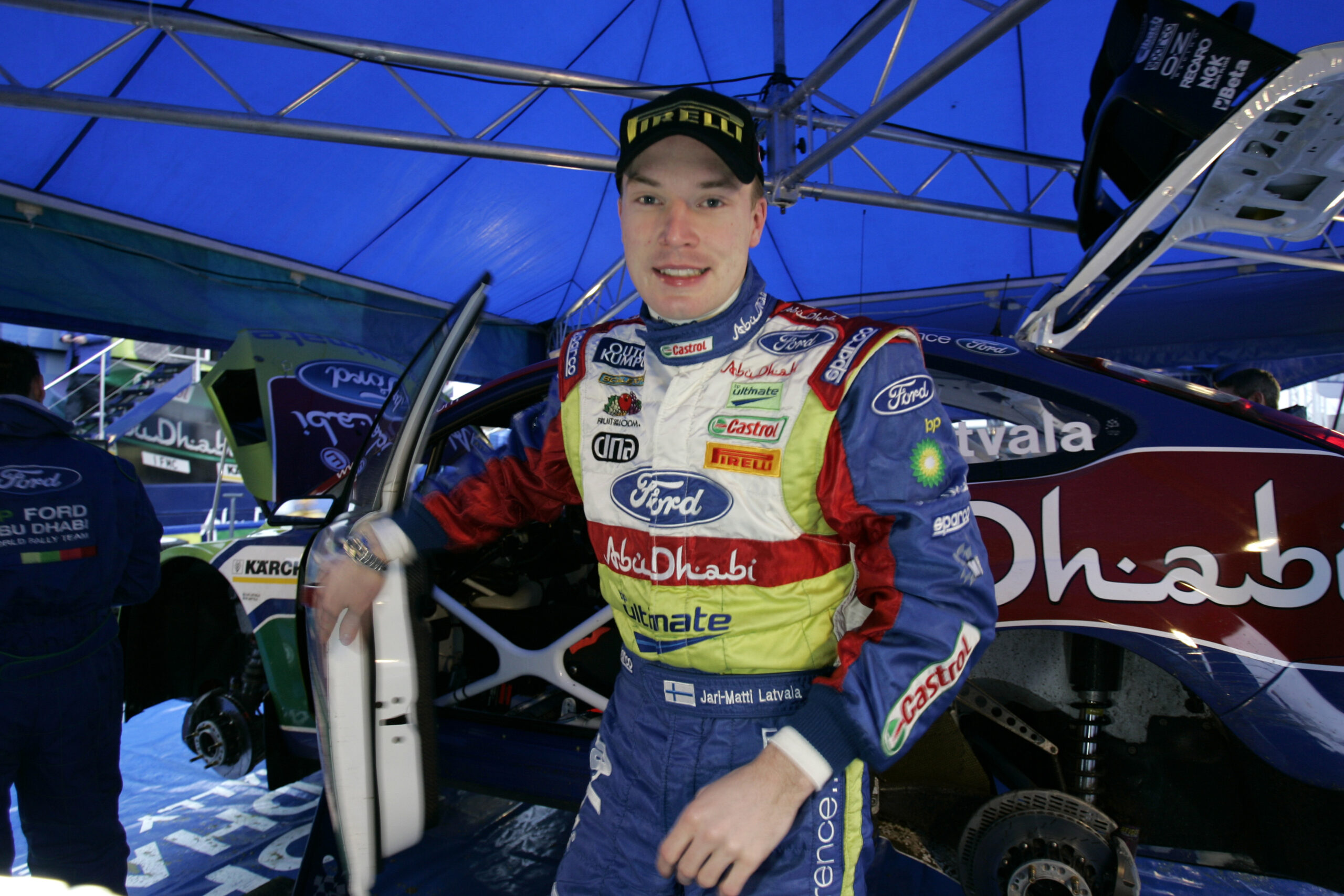
The Youngest
Jari-Matti Latvala, at the age of 23, secured his first victory in Rally Sweden in 2008, becoming the youngest WRC winner at that time. Since then, he has won Rally Sweden three more times: 2012, 2014, and 2017.

From being primarily something for the die-hard and seasoned rally foxes, Rally Sweden puts the audience at the center. With arenas and entertainment, the competitions become more accessible, creating experiences beyond the ordinary. Colin's Crest becomes a concept and a example for the entire WRC.
2010s

Aiming for Colin’s
Ken Block literally jumps into the rally and, of course, wins the Colin's Crest Award.

The Speeding Incident
Petter Solberg is stopped on a transport stage and loses his driver's license. The navigator takes over and completes the rally behind the wheel.

VW Shows No Mercy
Volkswagen enters WRC with full force, a 100% commitment that pays off with total dominance for four years.

The Nail-Biter
Before the Power Stage in 2015, there is less than five seconds between the first and third positions. Andreas Mikkelsen is leading but hits a snowbank and spins. Sébastien Ogier overtakes and wins ahead of Thierry Neuville, with Mikkelsen finishing third.
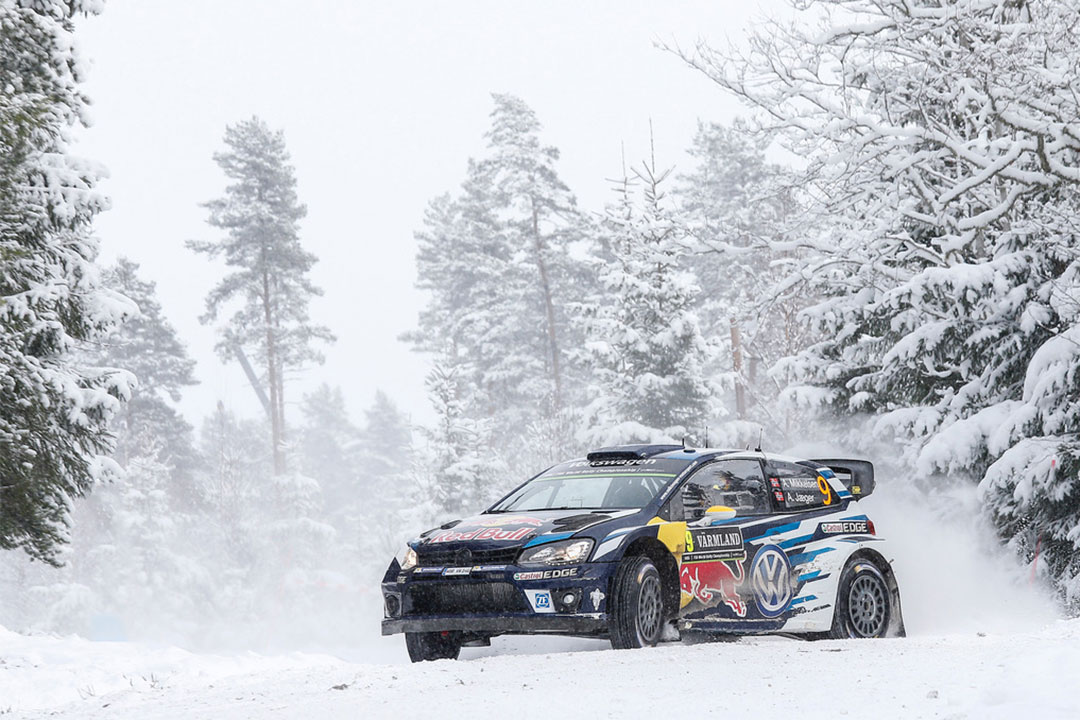
The Weather Turnaround
Despite extremely mild weather, the rally and its organizers manage to hold the competition in 2016, albeit with a few canceled stages.

The Saga Of Rally Sweden 2016

Windshield Incident
Henning Solberg rolls on the excessively fast SS9 Knon 2017 (later canceled, due to excessive speed, before SS12). He receives help from the audience to roll the car back upright and finish the race. The windshield is damaged, but Oskar Solberg finds a replacement on a car in the service area – Alexiy Lukyanuk's reconnaissance vehicle. With the assistance of a car glass company, the windshield is moved from Alexiy's car to Henning's.

The Saga Of Rally Sweden 2017

The Saga Of Rally Sweden 2018

No Guts, No Glory
Despite a comfortable lead before the final Power Stage, Ott Tänak goes flat out and secures the five extra points.

The Saga Of Rally Sweden 2019

The rally celebrated its 70th year in 2020 and manages to take place just before Covid-19 and the pandemic shut down of the world. Elfyn Evans becomes the first Briton and, at the same time, the last Rally Sweden winner in the forests of Värmland before the rally moves to Umeå to ensure snow availability and real winter roads.
2020s
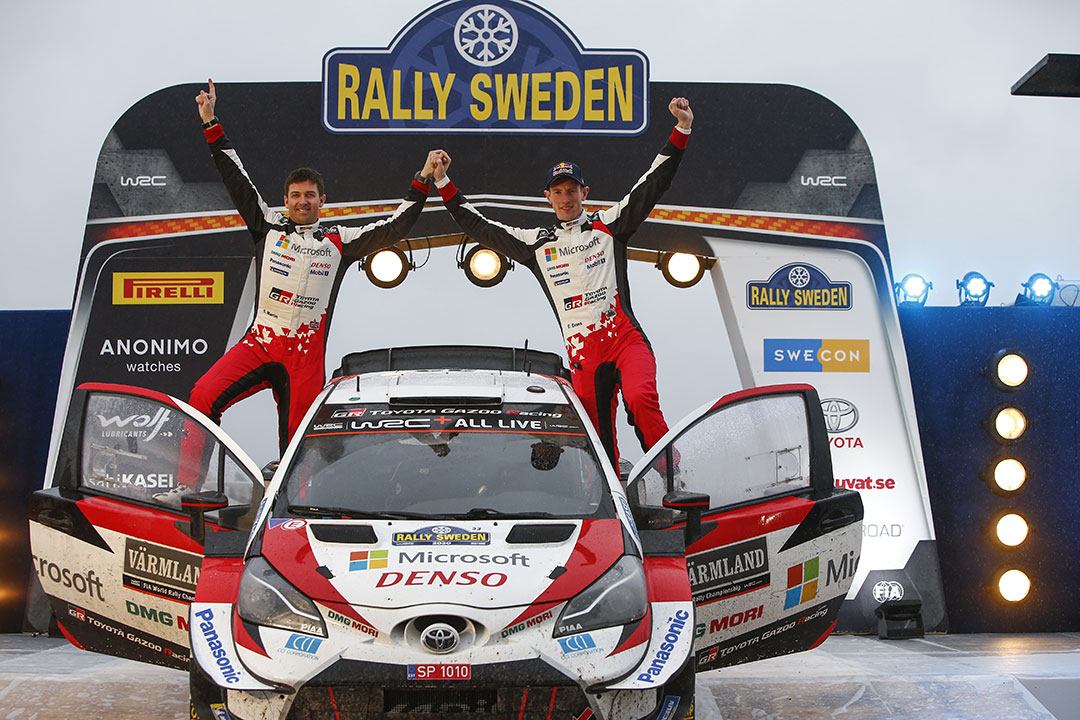
Först och sist
Rallyt fyller 70 år och hinner precis genomföras innan Covid-19 och pandemin stänger ner större delar av världen. Elfyn Evans blir den förste britten och samtidigt siste Rally Sweden-vinnaren i värmlandsskogarna.


Covid–19
The rally, like almost everything everywere in the world, is canceled due to the coronavirus pandemic.

Relocation
The increasingly warmer and snow-poor winters in Värmland make a real winter rally impossible, so the move is made to the much colder and snow-assured Västerbotten and Umeå.

The Saga Of Rally Sweden 2022
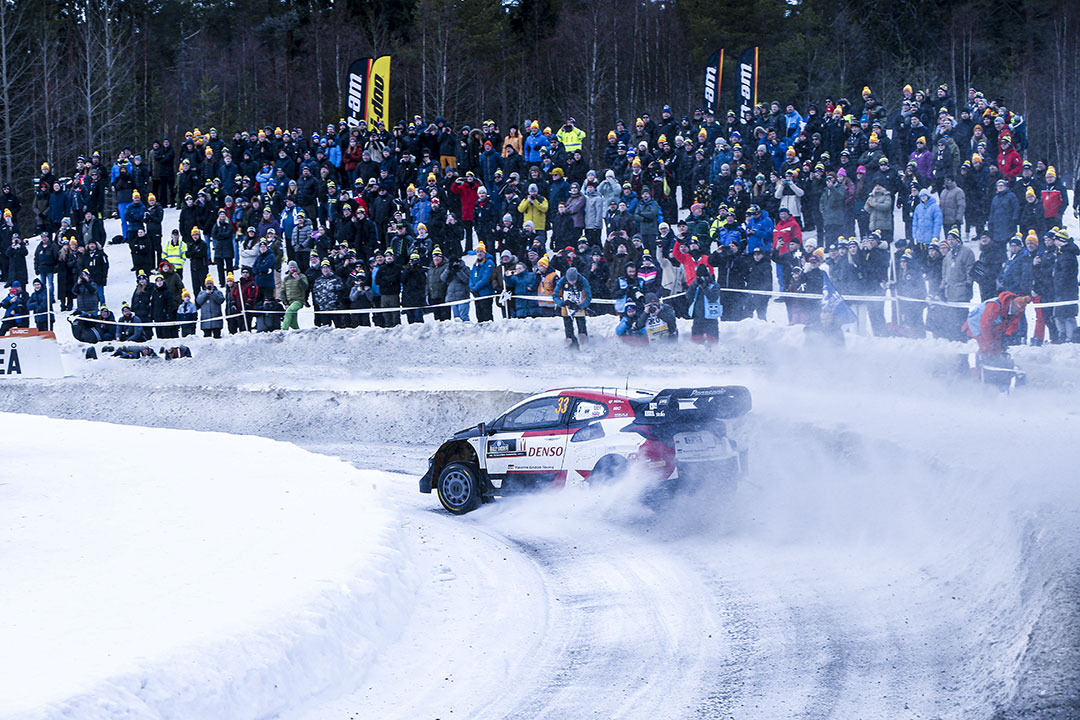
Red Barn Success
The Red Barn Arena has become the rally's natural centre. Each competition day concludes with the finish and After Rally. On Saturday in 2023, over twenty thousand spectators gathered at the coolest arena in WRC.

The Saga Of Rally Sweden 2023
